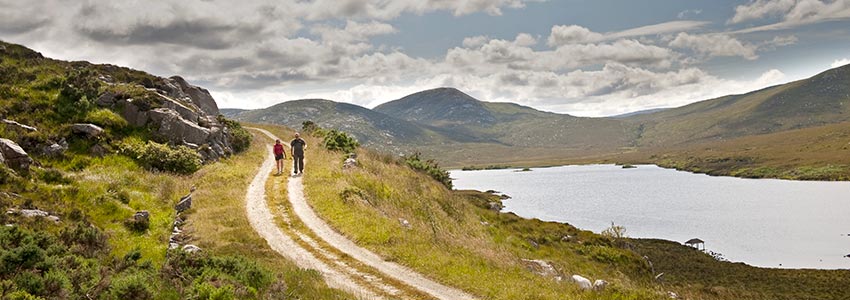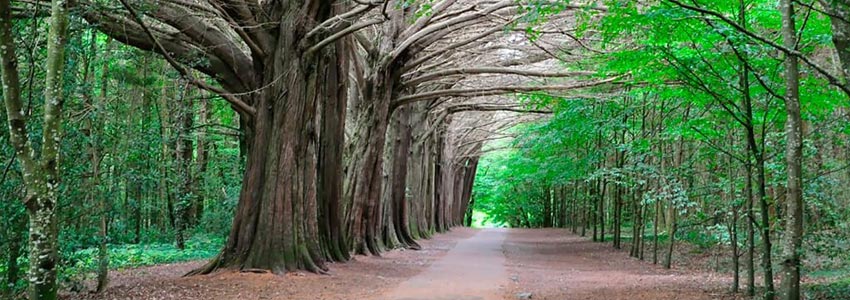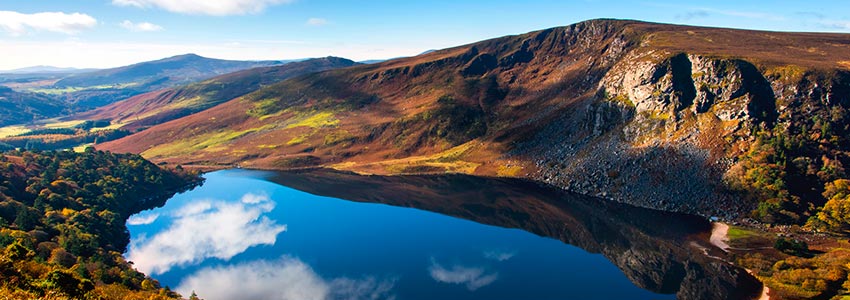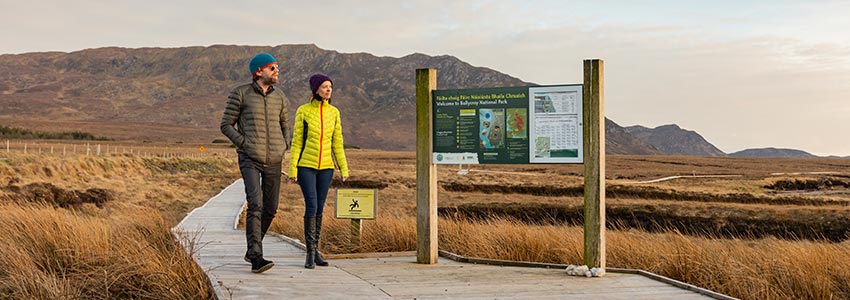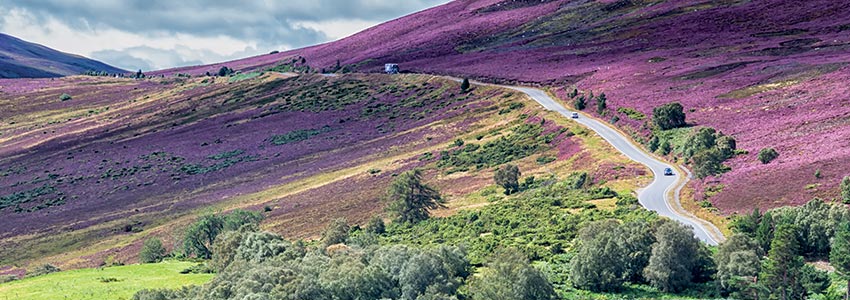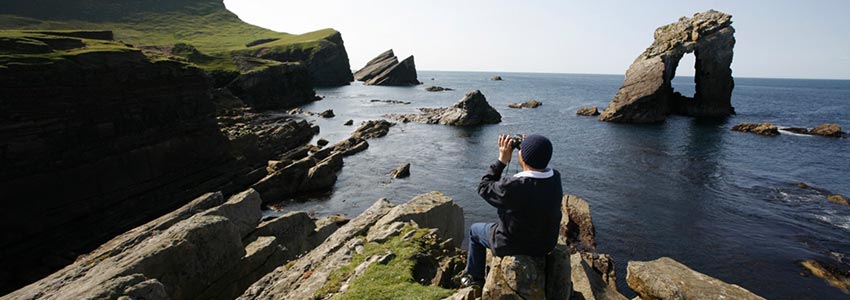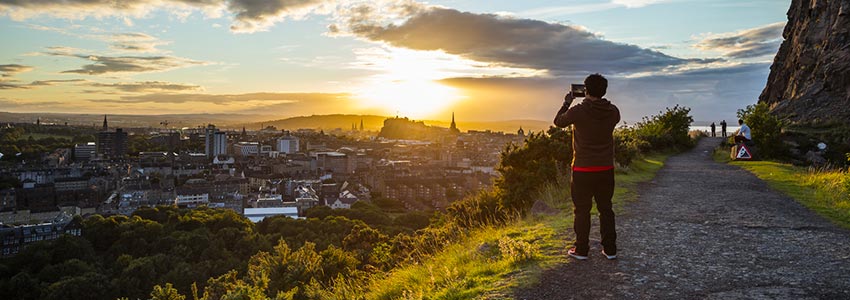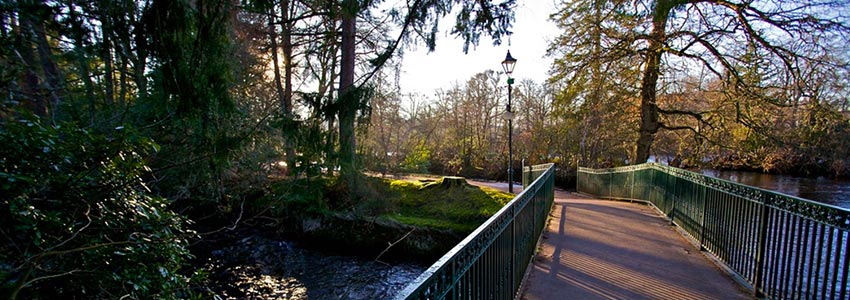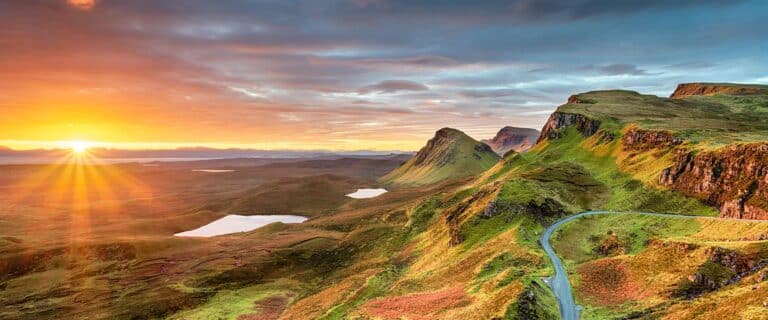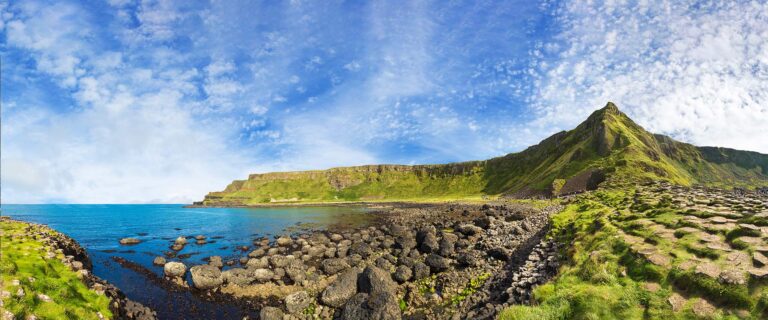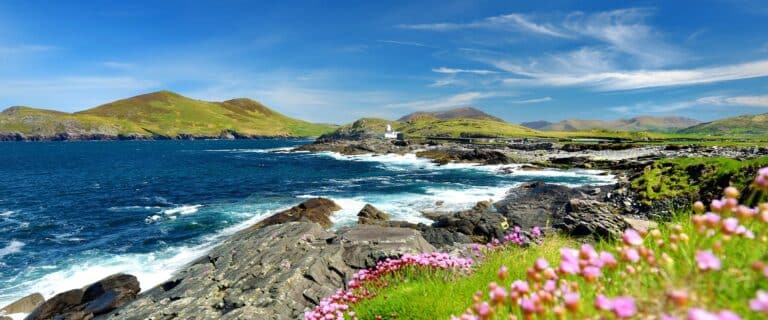Science tells us that forest walks strengthen our immune system, reduce stress levels, and help lower blood pressure. What our heart tells us is this: Let’s go discover the earth. Let’s recover our wild side in Ireland and Scotland. Let’s travel to places that give us a peek at roaming reindeer and nesting geese. Consider the natural world of Celtic magnificence when it’s time to renew and reconnect.
We want to experience the joy of Gaelic forests, rivers, awe-inspiring mountains, tidy bays, and majestic cliff walks. We feel ourselves refreshed when we touch the bark of large trees and the blossoms of purple heather. We want to bathe in the glory of forests. Our minds are seduced by wonder, and the health benefits are mighty.
First to Ireland:
Glenveagh National Park, County Donegal
Glenveagh, in Northern Ireland, has enchanting native oaks and paths that wind through a pine forest. The lakes are clear and reflect the sky. Waterfalls tumble down rugged mountains. Right in the center of the park, amazingly enough, is a castle. This late 19th century mansion is a haunting beauty. It was built as a remote hunting lodge. Walk a path through the pines to find her.
There’s heather growing on the roof of the visitor’s center. Stop and get a map of the countryside to best explore the possibilities. Glenveagh is in the heart of ancient Ireland. You may want to go deeper into the history of Donegal and drive along her wild coastline.
Coole Park, County Galway
Legendary Coole Park, all 1,000 acres, belonged to Lady Augusta Gregory and was the center of 20th century Irish literary revival. (William Butler Years memorialized it in his poem of Seven Woods.) George Bernard Shaw, Sean O’Casey, and many other artists were inspired by its beauty, and they carved their initials on the Autograph Tree. The lone beech still stands.
The Family Trail takes you past deer, the site of the original house, and the Autograph Tree. The longer Seven Woods Trail connects the different forests that Yeats loved. Depending on the season, expect to see bluebells and jays, violets, treecreepers, and red squirrels. There are also butterflies galore, stoats, dragonflies, and swans. You’re invited behind the scenes to discover this piece of the earth that inspired so much literary achievement.
Wexford Slobs and Wildfowl Reserve, County Wexford
The sound of birdcalls and fowl conversation happily fills this nature preserve. There are more than 250 species of birds that call this home. For many it’s their second home, their first being Greenland, Arctic Canada, Scandinavia, and Russia. The reserve was originally established to preserve the white-fronted geese—there are about 45% (8,500) of the world’s population are here during the winter months. Imagine the squawking! Miraculous chaos.
There’s a 24-ft. tall observation tower for a nest-type view of the area. There are three other observation points. The Wexford Reserve is made for bird watchers, but it’s difficult to imagine anyone who wouldn’t enjoy it. As part of a National Heritage Area, it’s managed by the National Parks and Wildlife Service. Keep your eyes open. You might just catch a glimpse of the magnificent Gyrfalcon. We also love the Raven Reserve. Evermore.
Wicklow Mountains National Park
Just south of Dublin, you’ll find the largest National Park in Ireland, and the only one that’s located in the east. You can take a day trip to the park when you stay in Dublin, or you can visit on your way out of the city. Wicklow Park was created to conserve the extraordinary biodiversity of this area. As an added bonus, an ancient monastic settlement is located right in the Glendalough Valley.
There are wide vistas punctuated by forests and gentle winding roads. You’ll see clear streams rushing toward deep lakes of woodland valleys. If you feel adventurous, explore the uplands on foot. It’s there you truly have an intimate experience of nature.
Ballycroy National Park
This wild National Park is on the seaboard in northwest Mayo. When you go to Ballycroy you’ve made a true date with 60-square-miles of nature at its most raw. It is uninhabited, unspoiled, and dominated by the Nephin Beg mountain range. It is also one of the last intact active blanket bog systems in Western Europe. When you enter, there is a short nature trail and viewing area to see Achill Island. You can also picnic here or grab a cup of coffee.
The Park exists to protect habitats and species. Some of those protected are local heath, grassland, lakes, and rivers. The Greenland white-fronted geese, golden plover, and red grouse are just a few birds you’ll find here. There is a “dark skies” policy, meaning when evening falls you will see every star that shines above to protect this piece of country. A shuttle bus and a boardwalk to make this park accessible to all who care to enter another world.
Then to Scotland:
Cairngorms National Park
National Geographic called the Cairngorms one of the top twenty places in the world to visit. In the heart of Scotland’s Highlands, it has it all from distilleries, to castles, activities for the entire family, and room enough for solitude when you most need it. There are mountains and more mountains, rare and sub-arctic habitats, ancient forests, rivers, lochs, wildlife and traditional villages.
The region of the Cairngorms was central for much of Scotland’s history. It rolled with royal feuds and bloody battles. There are many important sites, and several castles in the National Park. The Caringorms is a vast panoply of Scotland’s history, portrayed on a landscape of highlands and heather, that stretches over thousands of years.
Loch Lomond and the Trossachs National Park
This National Park, without a doubt, has some of the most stunning scenery imaginable. It is a treasure trove of glens, lochs, mountains, and small hills. Do you want a spectacular view? Try Dumgoyne Hill. It’s just above the Glengoyne Distillery and offers panoramic views of the park. A walk down the hill for a tasting can be a very fine thing.
This National Park has four areas that support an astonishing variety of wildlife. Some winter here and others prefer it for summer. When you get off the more popular trails, you’re likely to see a golden eagle soaring on the tides of wind or a playful otter on the shores of Loch Lomond. This park, and its precious environment, is practically on the doorstep of Scotland’s main cities.
Shetland UNESCO Global Geopark
Shetland may be the only park that was 3 billion years in the making. Imagine an extinct volcano and shifting sands. (Eerie business!) Over hundreds of millions of years, the island has moved from just north of the South Pole, across the equator, to the North Atlantic. It has seen tropics, volcanoes, desert, ice ages, earthquakes, floods and ancient rivers—and all that past lunacy is written in the stones for you to see. It’s a living history of earth.
Imagine the extent of biodiversity on Shetland with that sort of past. Seals, otters, whales, and dolphins are on the coast. Over a million seabirds nest on the cliffs—listen to them talk! When the world seems tired, then you must visit Shetland to experience the wonder of life again.
Holyrood Park and Arthur’s Seat
Holyrood Park is a 640-acre Royal Park adjacent to Holyrood Palace, just a short walk from Edinburgh’s Royal Mile. Climb to the highest point, Arthur’s Seat. It’s an ancient volcano, and you’re gifted with an amazing view of elegant Edinburgh. Within the park is one of four hill forts that are 2,000 years old.
While there, visit St. Anthony’s Chapel, a 15th century medieval beauty. Notice a pleat of 150-foot cliffs that etch Edinburgh’s Skyline, a fresh water lake, and a calliope of birdsong. When you’re in the big city, give yourself a couple of hours to explore Holyrood. It’s nice to have a breath of fresh air, watch seabirds, and take a step back from people, just for a little bit.
The Ness Islands
If your travels lead you to Inverness, consider a getaway to the Ness Islands. Take a gentle walk or a soft evening stroll. This park is a short walk from the center of Inverness City, and it’s a sweet natural place. This group of islands is connected by suspension bridges, built during the Victorian Era. The walk is easy, about three miles, and no cars allowed! Feel the peace of a gentler era as you sit on a bench, read, do some people-watching, or picnic.
You’ll also pass the Inverness Botanic Gardens and the Inverness Cathedral. Spend the day, or spend an hour. Take the respite you need inside the wonder of a Victorian-era park that’s set just the way nature meant her to be.
The folks who live in Scotland and Ireland treasure their wildlife and their wilder lands. Head to one of their National Parks and breathe the miracle of natural renewal.
Wherever you travel in Ireland or Scotland, you are bound to be near parklands. Ask your Destination Expert to include at least one in your vacation!


